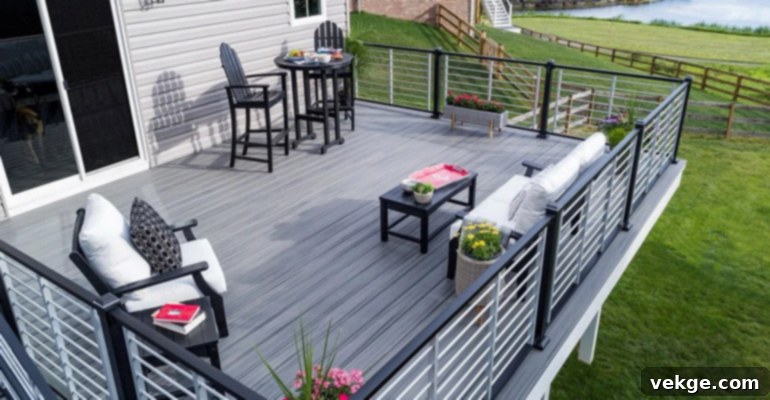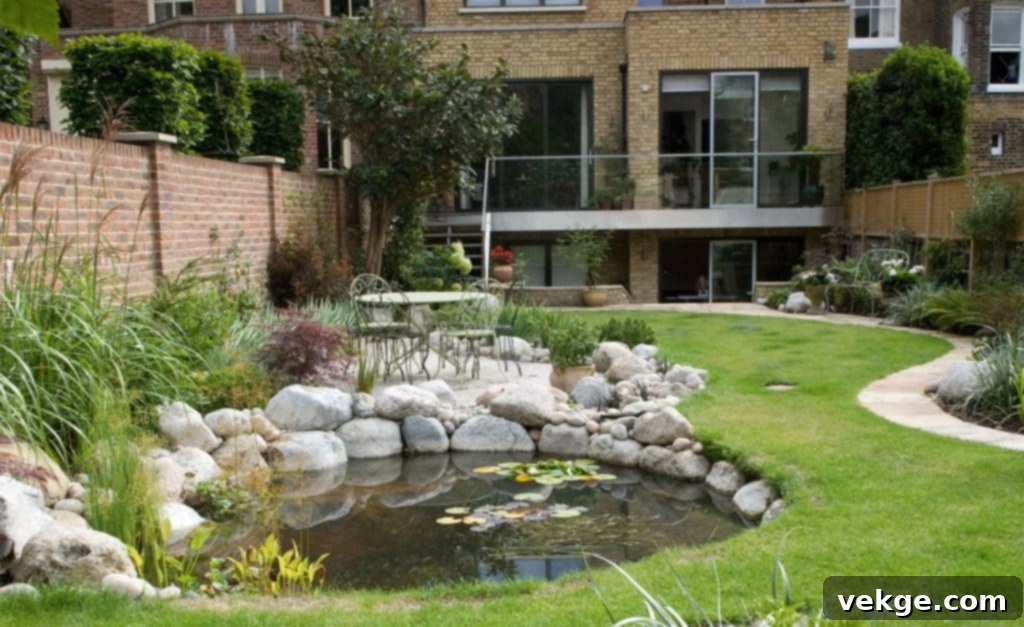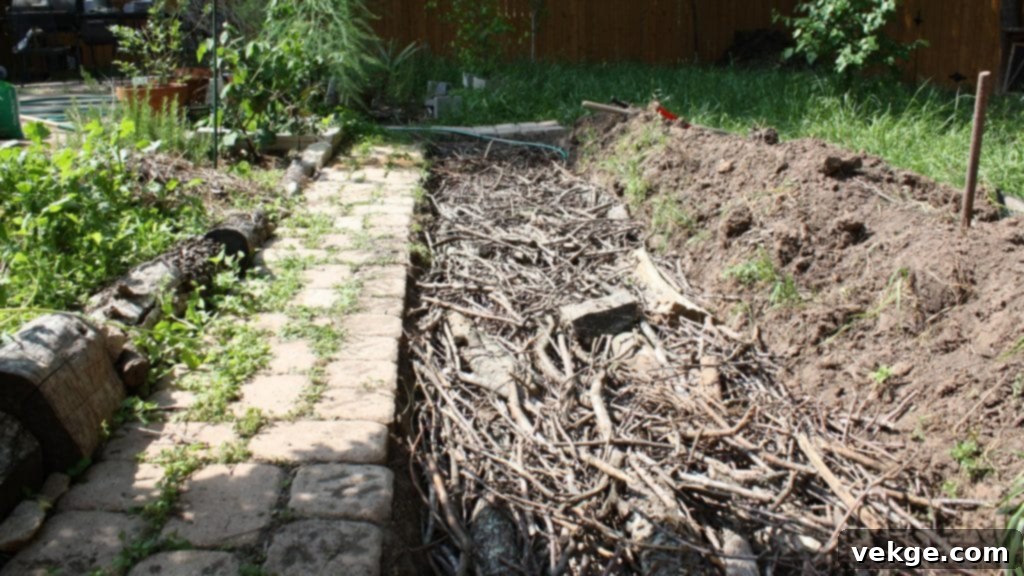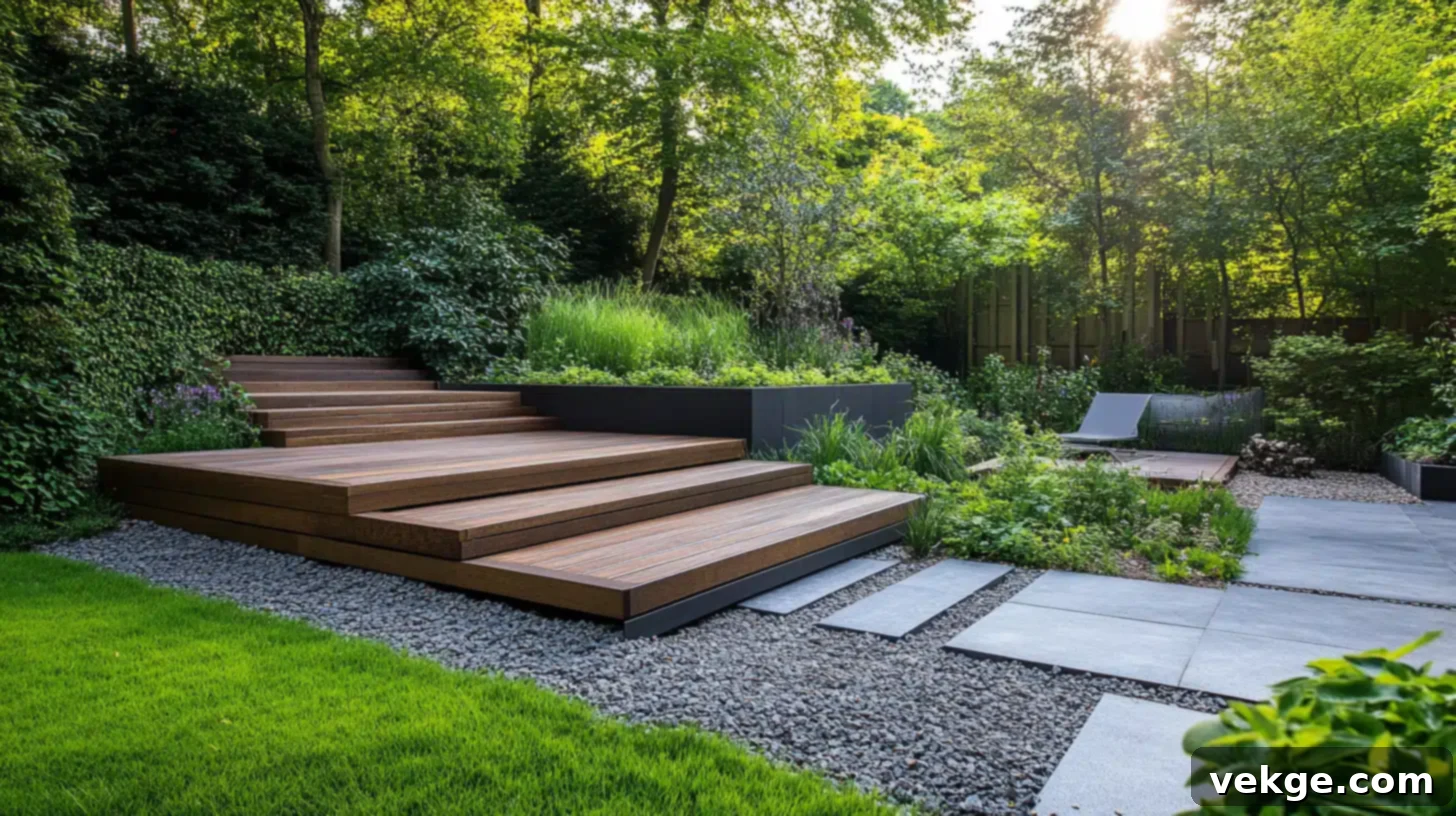Elevated vs. Ground-Level Decking: Crafting Your Perfect Outdoor Living Space with Durable Materials
Creating an inviting and functional outdoor living space can dramatically enhance your home and lifestyle. Decking, in particular, serves as a versatile extension of your indoor environment, perfect for relaxation, dining, and entertaining guests. However, the journey to your ideal deck begins with a crucial decision: choosing between elevated and ground-level designs, and then selecting the right material that promises longevity and minimal upkeep. This comprehensive guide will navigate the advantages and considerations of each decking type and delve into why modern composite decking is increasingly becoming the preferred, more durable choice over traditional timber.
Understanding Elevated Decking: Reaching New Heights in Garden Design

Elevated decking is constructed above the existing ground level, supported by a robust framework of posts or piers. This design choice is often driven by specific garden characteristics or a desire to achieve a particular aesthetic and functional outcome. It’s a sophisticated solution that can transform challenging terrains into magnificent outdoor retreats.
Advantages of Elevated Decking
Elevated decking offers a range of compelling benefits, especially for homeowners looking to maximize their garden’s potential:
- Enhanced Views and Scenic Vistas: By lifting your living space above ground level, an elevated deck provides a superior vantage point. This is particularly advantageous for gardens with beautiful landscapes, distant horizons, or intricate garden features that deserve to be admired from above. It allows you to fully immerse yourself in the surrounding environment, offering a unique perspective you wouldn’t get from ground level.
- Increased Privacy: Being elevated naturally creates a sense of separation from the immediate surroundings, offering a heightened degree of privacy. This can be invaluable in built-up areas or for homes with close neighbours, allowing you to enjoy your outdoor space without feeling overlooked.
- Solutions for Uneven Terrain: Elevated decks are an ingenious solution for sloped gardens or properties with uneven ground. Instead of undertaking extensive and costly landscaping to level the area, an elevated deck can create a perfectly flat, usable surface. This not only makes otherwise unusable areas functional but can also add architectural interest and value to your property.
- Improved Airflow: The space beneath an elevated deck can allow for better air circulation, which can be beneficial in warmer climates and can also help with moisture management, reducing the risk of dampness affecting the structure or the area below.
- Hidden Storage or Utilities: The void beneath an elevated deck can sometimes be utilized for discreet storage, housing garden tools, or concealing unsightly utilities like irrigation systems, adding practical functionality to your outdoor area.
For a deeper dive into material options suitable for elevated structures, consider exploring various decking material options that ensure both beauty and structural integrity.
Considerations for Elevated Decking
While highly appealing, elevated decking also comes with its own set of considerations that require careful planning:
- Higher Construction Costs: The need for substantial structural support, deeper foundations, and potentially more complex engineering translates to a higher initial investment compared to ground-level options. Factors like material quality, design complexity, and local building codes can further influence the overall cost.
- More Complex Installation: Building an elevated deck often requires specialized skills and adheres to stricter building regulations. The construction process can be more time-consuming and may necessitate professional installation to ensure safety and compliance.
- Challenging Maintenance: Accessing the underside of an elevated deck for cleaning, inspection, or repairs can be more difficult and, at times, hazardous. Regular maintenance is crucial to prevent structural issues and ensure longevity, which means planning for safe access points.
- Necessity for Access Structures: To make the deck accessible, you will need to incorporate steps, staircases, or ramps. These additions increase the overall complexity, material requirements, and cost of the project, while also needing to adhere to safety standards and aesthetic integration.
- Building Permits and Regulations: Elevated structures often fall under stricter building codes and may require specific permits and inspections, which can add time and bureaucracy to the project timeline.
Understanding Ground-Level Decking: Seamless Integration and Simplicity
Ground-level decking, as its name suggests, is built directly on or very close to the ground. This option typically requires minimal structural elevation, often resting on a low-profile foundation. It’s a widely popular choice for its straightforward installation, cost-effectiveness, and ease of integration with existing garden landscapes.
Advantages of Ground-Level Decking
Choosing a ground-level deck offers numerous practical and aesthetic benefits:
- Effortless Accessibility: One of the most significant advantages is the seamless transition it offers between your indoor and outdoor spaces. Ground-level decks are incredibly easy to access, making them ideal for families with young children, elderly individuals, or those with mobility challenges. They provide a fluid flow from internal living areas directly into the garden.
- Cost-Effective Construction: Generally, ground-level decking is less expensive to build. The simpler foundation requirements, fewer materials for structural support, and reduced labour complexity contribute to lower overall costs, making it an attractive option for budget-conscious homeowners.
- Simpler Maintenance: With no hidden underside to access, cleaning and maintaining a ground-level deck is considerably easier. Spills can be quickly cleaned, and any repairs or inspections can be done without specialized equipment or difficult access, saving both time and effort in the long run.
- Natural Integration with the Landscape: Ground-level decks tend to blend more harmoniously with the existing garden, creating a natural extension of your lawn or planting beds. This can make the garden feel larger and more cohesive.
- Reduced Need for Permits: In many regions, ground-level decks that meet certain criteria (e.g., height, proximity to property lines) may require fewer or no building permits, simplifying the planning and construction process.
Considerations for Ground-Level Decking
Despite its many benefits, ground-level decking also has potential drawbacks to consider:
- Limited Views and Privacy: Unlike elevated decks, a ground-level deck won’t offer expansive views or the same degree of privacy, as it remains at the same level as your immediate surroundings. This might be a concern in densely populated areas or if you have specific aesthetic goals related to views.
- Susceptibility to Drainage Issues: Being close to the ground makes these decks more vulnerable to moisture problems if not properly installed. Inadequate drainage can lead to water pooling, which can cause rot (especially with timber), mildew growth, and structural damage. Proper ground preparation and effective drainage solutions are critical.
- Increased Pest Vulnerability: Proximity to the ground means a higher risk of pest infestation, including termites, ants, and other insects that thrive in damp or dark environments. Regular inspection and preventative pest control measures are essential to protect the decking material.
- Potential for Vegetation Interference: Plants and weeds can grow up through or around ground-level decks, requiring more frequent weeding and clear-out underneath to prevent moisture retention and pest habitats.
- No Solution for Sloped Gardens: If your garden has a significant slope, a ground-level deck is generally not a viable option without extensive and costly earthworks to create a level base.
Choosing the Right Option Based on Garden Layout and Lifestyle

The decision between elevated and ground-level decking is deeply personal and should be guided by your garden’s unique characteristics, your lifestyle, and your ultimate vision for your outdoor space.
Key Factors to Consider for Your Decking Design
- Garden’s Topography: As discussed, a steep slope or very uneven ground naturally leans towards an elevated deck as the most practical and aesthetically pleasing solution. For flat gardens, both options are feasible, but ground-level may offer simpler installation.
- Size and Scale of Your Garden: In smaller gardens, a ground-level deck can make the space feel larger and more integrated. In expansive gardens, an elevated deck can create distinct zones or capture impressive views.
- Existing Features and Architecture: Consider how the deck will interact with your home’s existing architecture, window lines, and other garden features like retaining walls or mature trees. The deck should complement, not detract from, these elements.
- Intended Use of the Deck: Will it be a quiet reading nook, a bustling entertainment hub, or a child-friendly play area? Elevated decks might be better for adult entertaining with views, while ground-level decks are superb for seamless family interaction and direct garden access.
- Sun Exposure and Wind Patterns: An elevated deck might be more exposed to sun and wind, requiring shading solutions or windbreaks. Ground-level decks often benefit from natural shelter provided by surrounding landscaping.
- Budget and Timeline: Your financial resources and desired project completion time will significantly influence your choice, with ground-level generally being more budget-friendly and quicker to install.
For example, if you have a garden with stunning panoramic views or you wish to connect your outdoor space directly to an upper-level room, an elevated deck can be the perfect architectural statement. Conversely, for homeowners desiring a cohesive and easily accessible flow from their kitchen or living room to a flat backyard, a ground-level deck offers an unparalleled sense of openness and practicality.
Why Composite Decking Outshines Traditional Timber Decking in Durability and Value
For generations, timber has been the default choice for outdoor decking. Homeowners often gravitate towards its natural beauty and perceived affordability. However, the true cost and effort associated with timber often come to light years down the line. As maintenance demands increase and the material begins to degrade, many realize that the initial savings were a mirage. Enter composite decking – a revolutionary material engineered for superior performance and long-term value. Let’s delve into why composite decking is now considered the smarter, more durable investment for your outdoor space.
The Inherent Weaknesses of Timber Decking

Natural wood, while beautiful, is an organic material subject to the relentless forces of nature. When exposed to the elements, timber decking faces a myriad of challenges that impact its appearance, structural integrity, and safety over time:
- Vulnerability to Rot and Decay: Wood is highly susceptible to moisture absorption, leading to rot and fungal decay, especially in damp conditions or areas with poor drainage. This weakens the deck boards, making them hazardous and requiring costly replacements.
- Splintering and Cracking: As timber dries and ages, it tends to splinter and crack, creating an uncomfortable and potentially dangerous surface for bare feet, especially for children and pets.
- Insect Infestation: Wood is a food source for various pests, including termites and carpenter ants. These insects can tunnel through the deck, compromising its structure and requiring expensive extermination and repairs.
- Warping and Cupping: Fluctuations in temperature and humidity cause wood to expand and contract. This often leads to warping, twisting, and cupping of deck boards, creating an uneven surface and detracting from the deck’s aesthetic appeal.
- Fading and Discoloration: Prolonged exposure to UV rays causes timber to fade and lose its natural colour, turning a dull grey. To maintain its vibrant appearance, constant staining or painting is necessary.
These issues highlight that while timber might be initially cheaper, its susceptibility to environmental damage necessitates ongoing, costly, and labour-intensive maintenance to preserve its look and functionality.
The Unmatched Durability of Composite Decking
In stark contrast to timber, composite decking is a man-made marvel, typically composed of a blend of recycled wood fibres and plastic polymers. This innovative combination results in a material engineered for resilience and longevity, directly addressing the inherent flaws of natural wood:
- Exceptional Resistance to Elements: Composite decking is designed to be highly resistant to moisture, making it virtually impervious to rot, mould, and mildew. Its waterproof properties ensure it can withstand heavy rain and humidity without degrading.
- UV-Resistant and Fade-Proof: Advanced manufacturing processes incorporate UV stabilizers into composite materials, ensuring that the deck maintains its vibrant colour for many years without significant fading, even under harsh sunlight.
- Splinter-Free and Safe: Unlike timber, composite boards do not splinter, crack, or warp, providing a consistently smooth and safe surface underfoot. This makes it an ideal choice for families and pets.
- Immune to Pests: The synthetic composition of composite decking makes it unattractive and impenetrable to insects like termites and carpenter ants, eliminating the worry of pest infestations.
- Structural Integrity: Engineered for consistency and strength, composite decking maintains its structural integrity over time, resisting twisting, cupping, and warping, ensuring a long-lasting, even surface.
What you get with composite is a truly long-lasting decking space that looks fantastic and can be enjoyed all year round, regardless of the unpredictable British weather or harsh summer sun.
Enjoy Minimal Maintenance with Composite Decking
One of the most compelling arguments for composite decking is the dramatic reduction in maintenance requirements. The durability of composite translates directly into more time enjoying your outdoor space and less time working on it. Consider the stark contrast:
- Timber Maintenance Regimen: Traditional timber decks demand an annual ritual of cleaning, sanding, staining, sealing, or painting. These tasks are time-consuming, physically demanding, and involve recurring costs for materials like sandpaper, stains, sealants, and brushes. Skipping these steps often leads to rapid deterioration and a worn appearance.
- Composite’s Simple Upkeep: Composite decking, on the other hand, requires virtually no sanding, staining, or painting. Its robust surface simply needs a quick clean with soap and water periodically to remove dirt, dust, and any minor spills. This minimal effort keeps your deck looking pristine for decades, freeing up your weekends for relaxation and leisure.
This stark difference in maintenance not only saves you significant time and effort but also contributes to long-term cost savings, as you won’t be purchasing expensive treatment products year after year. It’s truly a “set it and forget it” solution compared to the ongoing commitment of timber.
A Superior Long-Term Investment
While the initial outlay for composite decking might be slightly higher than for some timber options, it is widely recognized as a far superior long-term investment. Here’s why:
- Exceptional Longevity: Composite decks are engineered to last significantly longer than timber decks, often coming with warranties of 25 years or more, compared to timber’s typically shorter lifespan. This means fewer replacements and repairs over the decades.
- Consistent Aesthetic Appeal: Thanks to its resistance to fading, warping, and splintering, composite decking maintains its beautiful appearance with minimal effort for many years. This sustained curb appeal adds significant value to your property.
- Higher Return on Investment (ROI): When factoring in the total cost of ownership – including initial purchase, installation, and ongoing maintenance – composite decking often proves to be more cost-effective over its lifespan. The reduced maintenance costs, coupled with its longevity and sustained attractiveness, lead to a higher return on your investment.
- Added Property Value: A well-maintained, durable composite deck is a highly desirable feature for potential homebuyers. It signifies quality, low upkeep, and an attractive outdoor living space, thereby enhancing your property’s market value.
- Environmental Considerations: Many composite decking products incorporate recycled plastics and wood fibres, making them an environmentally conscious choice that reduces waste and the demand for virgin timber.
Ultimately, choosing composite decking means investing in a renovation that not only enhances your daily outdoor experience but also delivers substantial long-term value, making your property more appealing and valuable for years to come.
Conclusion: Crafting Your Ideal Outdoor Retreat
The journey to creating your perfect outdoor living space is an exciting one, full of possibilities. Whether you envision an elevated sanctuary offering breathtaking views or a ground-level haven seamlessly blending with your garden, the choice between elevated and ground-level decking profoundly impacts your design, functionality, and budget. By carefully weighing the distinct advantages and considerations of each option against your garden’s unique layout, your lifestyle needs, and aesthetic preferences, you can make an informed decision.
Furthermore, selecting the right material is paramount for ensuring the longevity and enjoyment of your deck. While timber offers a classic appeal, the undeniable durability, minimal maintenance, and superior long-term value of composite decking make it a compelling choice for the modern homeowner. By choosing composite, you are investing in a beautiful, resilient outdoor space that will provide years of enjoyment with minimal effort, allowing you to spend more time relaxing and entertaining, and less time on upkeep. Make a thoughtful choice today, and transform your backyard into the dream outdoor oasis you’ve always desired.
